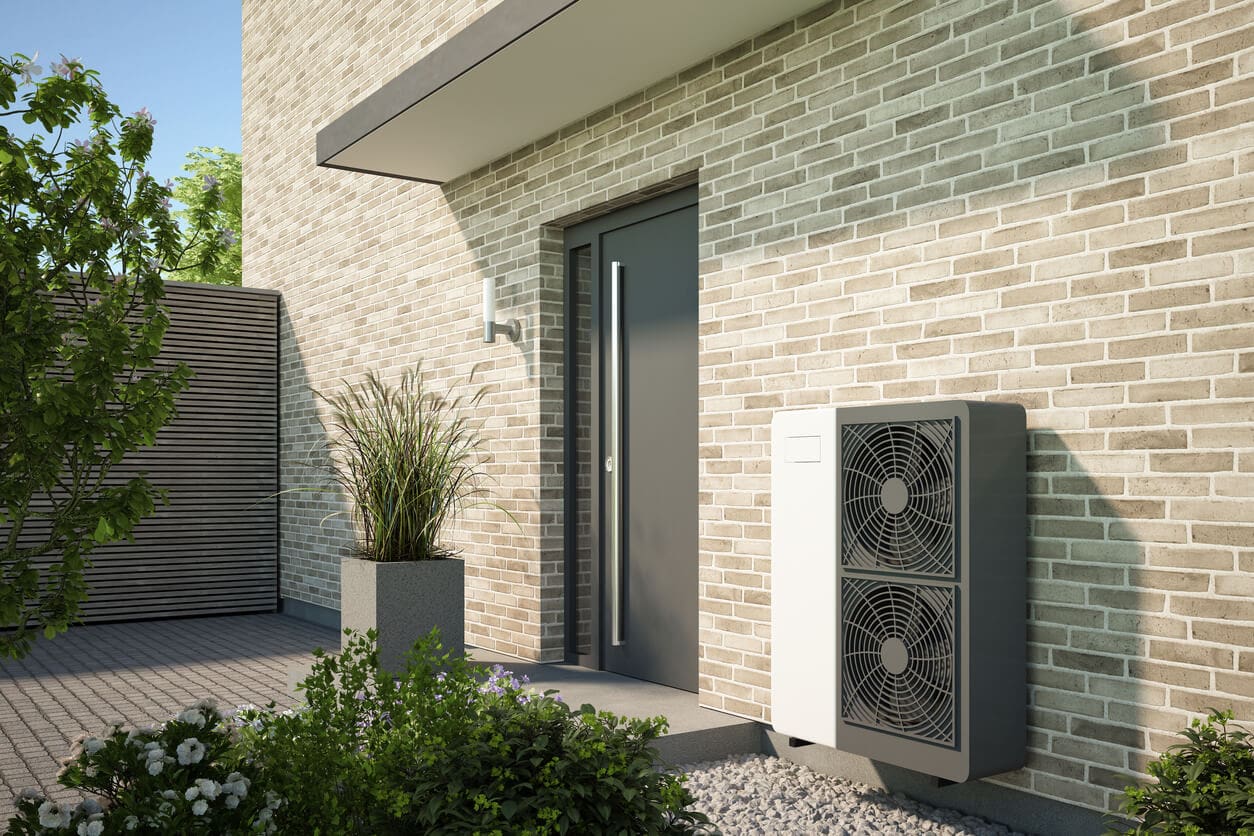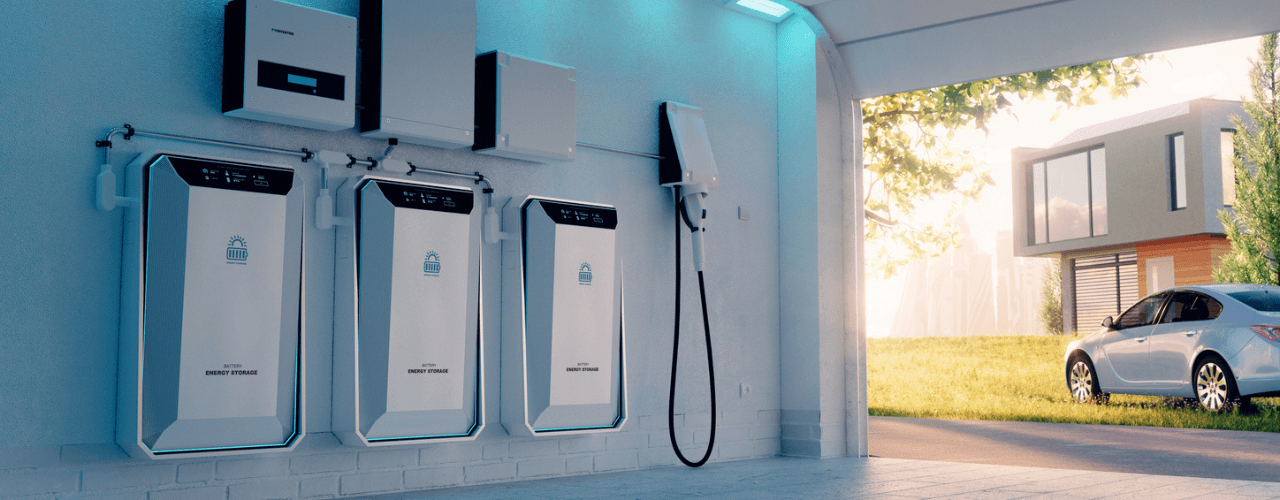
Renewable energy solutions for UK homes and businesses: What are your real options?
Energy bills keep climbing and so does the need to reduce carbon emissions. For UK...

Heat Pumps
Tired of unpredictable heating costs and energy compliance pressure? You’re not the only one. Across the UK, more homeowners, developers, and landlords are rethinking how to heat their properties in ways that are cleaner, more cost-effective, and future ready. If you’re planning a new build, overseeing a retrofit, or looking to upgrade an old boiler, air source heat pump installation is a smart step that delivers reliable savings and strengthens your long-term energy strategy.
But a successful installation starts with clear expectations. Knowing how the process works from system design to installation timelines and available grants helps you make smart decisions about your air source heat pump installation without delays or guesswork.
An air source heat pump (ASHP) collects low-temperature heat from the air outside and uses it to provide heating and hot water. Instead of generating heat by burning fuel, it transfers energy making it far more efficient. In most homes, it integrates well with underfloor heating or radiators, if the system is correctly sized.
Many UK households already use this technology to reduce their carbon footprint and control heating costs. For anyone upgrading from oil or gas, or planning a new property, air source heat pump installation offers one of the most straightforward paths to lower bills and cleaner heating in 2025.
Before installing an air source heat pump, you’ll need to assess whether your property is ready. A qualified installer like ESS will typically evaluate:
Homes with well-insulated walls, double glazing, and space for the outdoor unit are strong candidates. If you’re unsure, a site visit can clarify what upgrades may be needed.
Here’s how a typical installation works:
An engineer visits your property to assess suitability, recommend the right system, and provide a quote.
Based on your usage, layout, and building type, the system is designed to meet your needs including specifying the correct size, location, and compatibility.
The external unit is fitted outside your home ideally near a wall with access to airflow. An internal unit connects to your existing heating and hot water systems.
The unit is wired into your property’s electrical supply. Installers then test the system and ensure it runs efficiently.
You’ll be shown how to use and maintain the system. Installers will also ensure all settings are optimised for performance.
This entire air source heat pump installation process typically takes 2–4 days depending on property complexity.
In a well-insulated UK home, an air source heat pump typically costs £500–£900 per year to run, depending on household size, system setup, and usage patterns. These systems are highly efficient. In many homes, the COP falls between 2.5 and 4, meaning 2.5 to 4 units of heat are produced for every unit of electricity used.
This efficiency translates into lower ongoing bills compared to traditional oil and gas systems. Well-insulated homes see the best results. Smart controls and weather-compensating thermostats can improve performance even further. With the right setup, you can reduce both your carbon footprint and your heating spend at the same time.
As of 2025, you may be eligible for financial support through the Boiler Upgrade Scheme in England and Wales, which offers a £7,500 grant towards air source heat pump installation. Scotland and Northern Ireland offer their own grant schemes via Home Energy Scotland and NI Energy Advice.
You’ll need to use an MCS-certified installer like ESS to qualify for air source heat pump installation incentives. ESS can guide you through the grant process and ensure your installation meets the necessary eligibility criteria.
Do I need planning permission?
In most cases, air source heat pumps fall under permitted development in England and Wales. However, if your property is listed or in a conservation area, local planning rules may apply. It’s always worth checking with your local authority in advance.
Will my existing radiators work?
Often yes but it depends on their size and how well your home holds heat. During your survey, ESS will assess your heating circuit and recommend whether you need to upgrade radiators or switch to a low-temperature-compatible system.
Are air source heat pumps noisy?
Modern units are much quieter than people expect, typically producing between 40 and 60 decibels like a fridge or quiet conversation. Placement also affects perceived noise levels.
Do they work in cold weather?
Yes. High-quality systems like those installed by ESS continue to extract heat from the air even when temperatures drop below freezing. They operate reliably in colder climates, including Scandinavia.
For many homeowners and developers, compliance with updated UK building regulations is a major factor when switching heating systems. Air source heat pump installation supports compliance with Part L, which now places a stronger emphasis on reducing carbon emissions from residential heating.
Heat pumps contribute positively to your SAP score and EPC rating. For new builds, this can help secure planning approval or meet sustainability targets. For retrofits, it can future-proof your home against future heating legislation and rising fuel costs.
When specified and installed correctly, air source heat pumps also integrate smoothly with other sustainable technologies like solar PV and smart heating controls supporting whole-home energy coordination with long-term efficiency gains.
ESS provides expert design, specification, and installation of air source heat pump systems for homes, new builds, and larger domestic projects. We only use MCS-certified engineers and quality heat pump brands like Mitsubishi.
We don’t do pushy sales. You’ll get honest advice, tailored recommendations, and a reliable system that performs well for years to come.
An air source heat pump could dramatically reduce your heating bills while helping you meet energy targets or building regulations. But a good outcome starts with a well-planned installation.
Contact ESS today to find out what’s possible for your property. Our engineers operate across the UK and are ready to help you make the switch with confidence.

Energy bills keep climbing and so does the need to reduce carbon emissions. For UK...

Commercial solar helps cut costs and hit sustainability targets both smart moves for today’s business...

Home energy habits are changing. As more people install solar panels and adopt smart technologies,...
We’re here to help with all your renewable energy needs.
Contact us today for expert advice, consultations, and support.